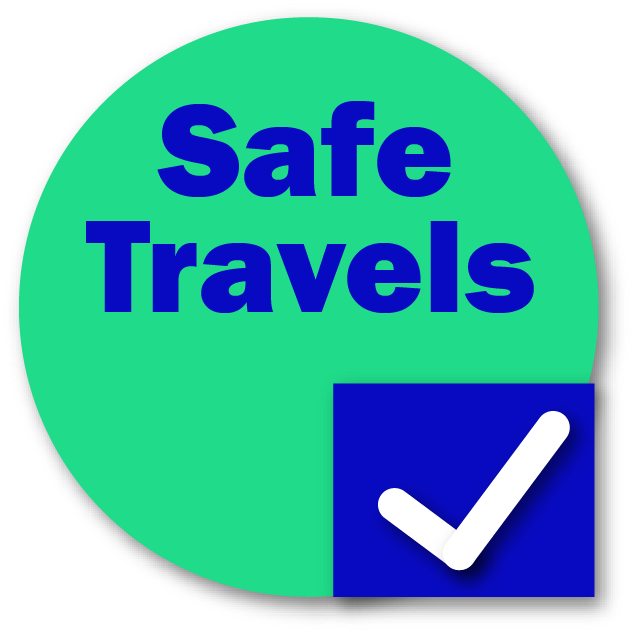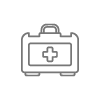




 trip overview
included
Trip Highlights
activities
accommodations
itinerary
packing list
faq
essential trip information
best season to travel
price & availability
Reserve Online
trip overview
included
Trip Highlights
activities
accommodations
itinerary
packing list
faq
essential trip information
best season to travel
price & availability
Reserve Online
 CREATING AUTHENTIC TOURS IN PERU
CREATING AUTHENTIC TOURS IN PERU

The Inca Trail hike to Machu Picchu is considered one of the best treks in the world due to its exquisite beauty and natural environment. This includes different ecological areas from high Andean deserts to rainforests. Following this ancient Inca Trail hike, passing through mysterious archaeological sites covered by vegetation environments, creating the impression of being discovered for the first time, to finally reach the lost city of the Incas: Machu Picchu.
The Inca trail Hike begins at Km 82. Our highly trained guides, who are deeply familiar with these ancient Inca footpaths, will expertly lead us through the magnificent Andean terrain. Along the way, we’ll traverse breathtaking high alpine passes, lush valleys, dense cloud forests, and rushing rivers. We’ll pass through ancient Inca remains of Andean settlements, ultimately arriving at Machu Picchu via Intipunku (the Sun Gate).
Each night, our team of porters and skilled cooks will have a delicious hot meal and a comfortable camp already set up for your convenience. Since we highly value sustainable tourism, we’ll have very little impact on the land, communities, and environment we encounter along the trail, and we will also take steps to enjoy a tranquil hike, avoiding crowds of fellow trekkers.
The level of physical condition is important because it facilitates the route and good performance in the walk, the whole route is along stone paths between mountains, for this reason your pace of life prior to your visit must include daily walks to be adapted to the route and weather changes that will occur. This route cannot be done freely. Andean Great Treks will assign you an authorized specialized guide who knows the route, culture and history, porters with experience in walks, the best chefs who will delight your palate and the best team as far as camping is concerned. more comfortable and pleasant your visit. The variety of weather starting with a cold climate from Cusco 19 Cº in the rainy season in the dry season 15 Cº to Machu Picchu that has a sub tropical climate of 25 Cº, warm and humid.
The jackpot for each traveler is to observe Machu Picchu from the top of an Inti Punku mountain and receive all the energy of nature, until descending to the wonderful town of Aguas Calientes.
Inca Trail Camping Tents: 3 nights
The overnight stays during the Inca Trail are made in double-roofed tents, which are installed by the accompanying team. The tents are equipped with thick foam mattresses that are carried by the porters. Sleeping bags can be rented on site for a fee prior to the start of the trek. The camps have permanent sanitary facilities, some have toilets, but most of them are of the “squat” variety. They may not be the most hygienic, but try to use them instead of nature, remember you are in one of the most amazing natural environments in the world. Please bring toilet paper with you. A dining tent offers enough space to eat together and end the evening in peace.
RETAMA MACHU PICCHU: 1 night
The Hotel Hotel Retama Machupicchu is located, 700 meters from the hot springs of Machu Picchu, it is the most beautiful and quiet area of the town, in the Wiñaywayna Park located three blocks from the Peru Rail station, overlooking the river and the moutains; It offers free WiFi and a tour desk. The accommodation offers luggage storage and a currency exchange service. Room service, 45-inch plasma AOC TV, 24-hour hot water, Hair dryer, Towels for thermal baths, Buffet breakfast.
Today you will be picked up from your hotel in Cusco at 4:00 am, then we will head in our private transport to the town of Ollantaytambo, where we will make a short stop to buy a drink or have a coffee. Then we continue for 1 more hour, until we reach the town of Pisqakucho (KM82), where we will meet the complete trekking team, we refer to the porters, cook and muleteers. There you will have to organize all your luggage, which will be given to the porters, and you will only have to take your small backpack.
After passing the control with your passport and Inca trail tickets, we begin the hike at 9:00 am. The first stretch will be a flat path covered with local bushes, next to the Vilcanota River and the snowy peaks of Veronica. After two hours of walking we will arrive at the first rest stop from where you can see the Inca ruins of Kanabamba, Laqtapata and Huillcaraqakay.
After taking the photos, our guide will explain the historical and cultural information to us. At noon we will have a nutritious lunch prepared by our cooks. Finally, we must hike for 1 hour and a half more, to the town of Huayllabamba where we will spend the first night in the camping tent.
Accommodation: Camping Tent
Included Activities:
Meals Included: Lunch, Dinner
After having breakfast at 6:30 am, we begin the hike to the Ayapata sector, it will be a two-hour ascent at a moderate pace. During the hike you will be able to appreciate the local flora and fauna, such as the colorful hummingbirds, harriers, Andean quail, thrushes, and tanagers. You can also see different varieties of local trees, such as the Queuña, Aliso, Mutuy, bromeliads, and orchids.
After a rest, we begin the ascent of the second section, which consists of a combination of stone steps and a steep path. In this sector, it will be necessary to use your walking sticks and to be constantly hydrated. The landscape is unique, it seems that you are passing through a magical forest, surrounded by Unca trees, and the sounds of waterfalls and birdsong. Around 10 am, we will arrive at the site of Llulluchapampa, where we make the second stop.
Continuing with the trek this time, we take the path to ascend to the highest pass of the entire Inca trail, we refer to the Warmiwañuska (4,200 m). This path is very steep and with stone steps made by the Incas. Normally it takes 1 hour and a half to ascend at a slow pace. Once you reach the summit you will have a privileged view of two different landscapes, on one side the cloud forest, and on the other the Andes with the Wayanay mountain.
Finally you will have to descend a path of stone steps to the site of Pacaymayu, where we will spend the night.
Accommodation: Camping Tent
Included Activities:
Meals Included: Breakfast, Lunch, Dinner
After breakfast, we set off to continue exploring the Inca trail. This day we will reach a second pass, but at a lower altitude than the previous day. After 40 minutes we will arrive at the first archaeological site, called Runkurakay. There you can visit its circular enclosures, which in Inca times were used as an astronomical observatory. We continue to climb the stone bridge to the Yanacocha lagoon area. There, the landscape changes from the Andes to the cloud forest. It is possible to see eagles, deer, and if you are lucky, a spectacled bear.
After two hours you will arrive at the Runkurakay pass (3750 m). In the distance, on sunny days, you can see the Vilcabamba mountain range, such as Pumasillu and Salkantay. Afterwards, we will descend the stone steps, enjoying the cloud forest that is the habitat of beautiful orchids, tanagers, and hummingbirds. At 10:00 am, we will arrive at the second archaeological center called Sayacmarka, here you will visit all the sacred spaces that were built by the Incas. It has an impressive view of the Aobamba valley, and the ruins of Komchamarka.
At 11:20 am you will arrive at the site of Chakicocha where we will stop for lunch. Afterwards you will have to do the most impressive walk of the Inca trail, since the path gets lost in the jungle, passing through tunnels and precipices, surrounded by giant ferns. Today we finish our walk at the Phuyupatamarka camp (3,900m) around 1:30 pm. In the afternoon you will visit the ruins of Phuyupamarka, this site has several terraces, houses and Inca temples. After dinner we rest under the sky full of stars.
Accommodation: Camping Tent
Included Activities:
Meals Included: Breakfast, Lunch, Dinner
After spending a night in the mountains, we wake up to enjoy a beautiful sunrise, where the forested mountains float above the clouds. The first three hours will be a long descent down stone stairs, which cross the bamboo forests. This route is very iconic, as you will have the best moments on the Inca Trail to Machu Picchu. We will arrive at 10:00 am at the archaeological site of Intipata, where you can enjoy an amazing landscape of the Vilcanota River and the mountains.
Then we descend to the ruins of Wiñaywayna, this site is considered the most beautiful of the entire Inca Trail to Machu Picchu, as it is built with the same material as Machu Picchu, and also has fine stone constructions, the palaces, temples and Inca houses still remain as they were left. At noon we will have our lunch, where we say goodbye to our porters, if you appreciate their work, you can give them a tip.
With your guide you will continue the hike to the Sun Gate, from where you will have a fabulous view of the sacred citadel of the Incas, Machu Picchu. After the photos, you will have to descend to the terraces area where you will have a specific area to take the famous photo of Machu Picchu. Finally you will take the bus down to the town of Aguas Calientes where you will spend the night in a comfortable hotel.
Accommodation: Hotel Retama
Included Activities:
Meals Included: Breakfast, Lunch
We leave our hotel after a very early breakfast around 4:30am to take the bus for the journey up to Machu Picchu ruins. Once inside the citadel we are provided with a 2 hour guided tour with plenty of free time for further exploring, taking photos, and the option to climb Huayna Picchu or Machu Picchu Mountain. Then back to Aguas Calientes for a leisurely lunch, at 14:30 pm we take our return train to Ollantaytambo , then by bus to Cusco, arriving at 7:30pm aprox. To the small plaza of San Francisco, wich is very close of main square.
Included Activities:
Meals Included: Breakfast
When packing for your Inca Trail hike to machu picchu , you should keep in mind that it is best to dress in layers due to the weather variation. The variety of clothes that you must pack to dress in layers is key to your walk, from the morning when it is quite cold until mid afternoon when the temperatures rise and reach their peak and then freeze again at night. Stratification is also useful as you ascend high passages that are exposed to winds or descend into shady valleys.
Effective stratification only works if each layer allows moisture to pass and escape into the external environment. In fact, the best layered clothing, such as wool, promotes moisture transfer through its absorbent properties. Cotton and denim absorb moisture and, therefore, should be avoided.
 warm jackets
warm jackets
 Hydration bladder
Hydration bladder
 wool socks
wool socks
 camera
camera
 scarf
scarf
 first aid kit
first aid kit
 hiking shoes
hiking shoes
 Dry bags
Dry bags
 Trekking Poles
Trekking Poles
 sun cream
sun cream
 Snack
Snack
 sun hat
sun hat
 bathing suite
bathing suite
 rain coat
rain coat
 Sandals
Sandals
 insect repellent
insect repellent
 Passport
Passport
 Down Jackets
Down Jackets
 toilet paper
toilet paper
 daypack
daypack
 Wool cap
Wool cap
 head lamp
head lamp
 gloves
gloves
 sun glasses
sun glasses
 cap
cap
 extra cash
extra cash
 Trekking pants
Trekking pants
The starting point of the Inca Trail 5 days and 4 nights Network is located in the Piscacucho km 82 community, in the district of Ollantaytambo, province of Urubamba.
Most people will get to Cusco by air. Please remember that the Cusco airport is for domestic travel only. If you come directly from overseas through Lima, you must get your bags in Lima and re-check them for your flight to Cusco. Four airline carriers fly roundtrip between Lima and Cusco. That includes LATAM Airlines, AVIANCA Airlines, Star Peru, and Peruvian Airlines. They all offer similar schedules and in-flight service, but we usually recommend either LATAM airlines or AVIANCA. They tend to be the most helpful when unexpected flight cancellations or delays occur
The Inca Trail to Machu Picchu is a 26 miles/42Km stretch of a stone-paved road built by the Incas in the XV century which was rediscovered in the year 1911. It is considered the best and most beautiful hiking destination of South America.
In the present, it takes on average four days for people to complete the entire length of the inca trail to Machu Picchu. Archeologists have widely heralded the Inca road system as one of the feats of civil engineering in the New World, which is only comparable to the famous ancient Roman roads.
At the height of the Incan empire, these inca trails stretched for over 40,000 Km / 25,000 miles, linking its capital, the city of Cusco (Qosqo in the native language of the Inca), to its far-flung domains, and crisscrossing some of the world’s most rugged and inhospitable terrains. It is a hundred percent proved that the Incas built upon, improved, and expanded the roads left by the people and nations that preceded them and the conquered people.
All the infrastructure built along the inca trail network, such as bridges, waypoints, checkpoints, garrisons, administrative centers, and religious shrines, were thought to be part of a whole that manifested the power of the Inca Empire. The inca trails were considered fundamental to the functioning of their political, social, religious, and economic system. They were used as a tool of coercion and persuasion of the people that lived under their domain. The inca trail displayed their disposition to perpetuate their power and influence over the inhabitants of these lands for generations to come.
Two main inca trails were running in parallel from south to north, one through the highlands of the Andean mountain range, from Quito Ecuador to the northwestern part of Argentina in Tucuman, and the other stretching along the coast all the way from Tumbes in northern Peru to the Maule river in Chile, crossing hundreds of rivers and ending in the Pacific ocean and the Atacama desert.
Just as these inca trails were fundamental to the expansion of the power of the Inca People from Cusco, they also played a key role in the defeat of the Inca at the hands of the European conquerors coming from Spain. They facilitated the movement of troops and resources fundamental to the success of the Spanish forces in taking over the Inca Empire.
The Inca trail trek is famous because it provides hikers the only way to arrive in Machu Picchu by means of hiking. Upon the re-discovery of Machu Picchu by the American scholar Hiram Bingham, the Inca trail to machu picchu was also brought back to life.
Teams of archaeologists and local peasants explored what remained of this ancient inca trail, finding many Incan complexes and temples along the way that became some of their most beautiful attractions. Machu Picchu was named a UNESCO world heritage site in 1983, and one of the seven new wonders of the world in 2003, which made it a famous must-see travel destination.
The Inca Inca Trail Trek to Machu Picchu began receiving more tourists when Peru entered into a phase of pacification in coming out of a kind of civil war that bled the country from the early ’80s up until the mid-’90s. By the end of the last century, thousands of people flocked to this beautiful destination to arrive in the Sungate of Machu Picchu at sunrise. Only the people who hike the trail to machu piccu can experience such an event.
Just like every other outdoor activity, hiking involves a dose of risk-taking. However, the Machu Picchu hike is not dangerous at all.
There are no places where one’s safety might be compromised. In any case, the best way to minimize any danger level is by acting proactively and taking the necessary measures to prevent any such situations. For instance, proper acclimatization will prevent you from getting altitude sickness, which is the number one reason why people fall ill.
Along the trek, you will walk through different terrains, and experience diverse microclimates and altitudes. All of these factors contribute to the great biodiversity that is unique to this area.
For the inca trail trek more than any of the treks, we recommend the use of Trekking poles, especially for those passengers with knee problems. There are multiple times during the inca trail trek that a Trekking poles is handy, be it ascending a mountain or walking down immense sets of Inca stairs. It will help with your balance and reduce the impact on your knees.
Cusco has two distinct seasons: dry and rainy. However, in these two seasons, you can experience the different microclimates of each town. The microclimate varies according to the altitude you are at. Having that said, you will notice that the climate in Machu Picchu and along the way varies. You will hike from an altitude of 2050 m.a.s.l. to 4200 m.a.s.l.
Rainy season: From November to April. During this time Cusco receives a greater amount of rainfall. Average daytime temperatures are higher than the dry season at 23 °C while night temperatures can be as cold as 6 °C. Likewise, Annual rainfall is 160 mm. During these months, it is cloudy and humidity can reach 91%.
Dry season: From May to October. Days are bright and sunny with a temperature of 22 °C (61 °F) while nights are much colder sometimes with a low temperature of 0 °C. Likewise, Annual rainfall is 60 mm. It is sunny with a clear sky and 70% of humidity.
Because of high altitude temperatures can change quickly and radical. It can get pretty cold during the nights. In winter (May-September) temperature may drop below 0°C/32°F. So be prepared for cold too, its highly advisable get locally made gloves and a hat for the cold nights.
The best season to do the Inca Trail hike is during the dry season. However, you should know that whether you come in the dry or rainy season, it will have advantages and disadvantages.
If you do the Inca Trail from November to January, you won’t see as many tourists as during the other months. This is because the rainy season starts in November.
If you do the Inca Trail from May to August, you will notice crowds of people, which means you won’t have that much privacy. However, the weather is pleasant and there is no rain.
Tips: It is important to pack light and consider the climate of the time of the year you are coming to do the inca trail 4 days. If it is during the rainy season, you need to buy a rain poncho and bring a raincoat. Wear always sunscreen no matter the time of the year.
The Classic 5 day/ 4 night Inca Trail hike includes beautiful places. Among the tourist attractions, we can name archaeological remains and natural areas that are found on the route.
Piskacucho 2720m / 8923ft:
The Piscacucho community or better known 82 kilometer, is located next to the rail to Aguas Calientes. Here is where the famous 5 day/4 night Inca Trail to Machu Picchu starts.
Llactapata 2850 m / 9350 ft:
The name of the Archeological Center of Llactapata comes from two Quechua words: Llaqta = Town, Pata = Elevated place. It is an Incan town located at the confluence of the rivers Cusichaca and Urubamba. Llactapata consists of constructions with different well defined sectors such as: Enclosures, terraces, plazas, staircases, channels, etc. This archeological site shouldn’t be confused with the one that has the same name and that you can visit on the Salkantay trek, which was a ceremonial center.
Wayllabamba (1st campsite) 3000m / 9842ft:
Wayllabamba comes from Quechua words and means ‘grassy plain’. It is here where you will camp on the first day hiking the inca trail trek. There is a village nearby where travelers can mingle with local villagers. You can see a few dispersed houses, terraces and an old aqueduct and channels that trace back to the Inca period. This small village is located at the confluence of the river Cusichaca and Llullucha stream (or Hatun Wayruro).
Ayapata 3300 m / 10829 ft:
This place shows a flat area which serves as a resting place. From this point, you can appreciate the impressive Andean Mountains and the beginning of the micro climates and ecosystem.
Llulluchapampa 3800 m / 12460 ft:
This point is a clear proof of the steep climb ahead. The reason for the name is thanks to the Llullucha stream that flows along the Inca Trail. Along the way, you will observe the great variety of the flora and fauna, and the charm birds chirping. Llulluchapampa is the last place where you can buy supplies for the rest of the Inca Trail.
1st Warmiwañusca Pass 4200 m / 13779 ft:
This is the first mountain pass that tourists walk through on the Inca Trail to Machu Picchu and it is the highest point along the hike. Its name comes from two Quechua words that means “Dead Woman”. It is a high Andean zone from which you can observe a magnificent and diverse landscape. Although the climb to the steep summit requires a great effort, it is worth it for the incredible view and feeling of achievement of the high altitude.
Pacaymayu (2nd campsite) 3580 m / 11700 ft:
It is here where you camp on the second day. Getting to this campsite is a great achievement because of the strenuous up and down mountains you will hike through. You can appreciate a more diverse ecosystem here since it is the beginning of the jungle side with more vegetation and wildlife.
Runkuracay 3680 m / 12073 ft:
It is an Incan archeological site. Its name comes from Quechua words that means “Abandoned or collapsed house”. The Archeological Site of Runkuracay is located in the mountain with the same name. This archeological site consists of semicircular construction, with a main square and other facilities that surround the construct such as niches, recesses, and trapezoidal doors.
2nd Runkuracay Pass 4000 m / 13779 ft:
It is at a very short distance of the archeological center. This is the second Mountain pass that you will walk through. Although the climb to this point is not very steep, the high altitude is. From this point, you can observe the Sayacmarka viewpoint, Archeological site of Runkuracay and Cochapata lagoon.
Sayacmarka 3650 m / 12000 ft:
This archeological site is considered an Incan fortress and the name comes from Quechua words that means “Inaccessible town” due to its location. Its stone architecture is magnificent and is seen in all the area. You can find the temple of the Sun, food storage rooms, and a residential area. There is a complex ingenious irrigation system.
Chaquicocha 3600 m / 11800 ft:
Here you can find the Chaquicocha lagoon which means “Dry Lagoon” and it is here where you can rest. From this point, you can observe the change in the ecosystem that is the beginning of the tropical forest. Near the area, you can find an Incan tunnel that takes you to the other side to continue with the hike.
3rd Phuyutupamarca Pass 3680 m / 12073 ft:
Third and last Mountain pass that you will hike through in the Inca Trail. The Archeological Site of Phuyupatamarca is located here. Phuyupatamarca comes from the Quechua words and means “The City Above the Clouds”. This is because it is surrounded by clouds. It has a great amount of enclosures and a sophisticated retaining wall structure since it is located on the steepest side of the mountain.
Intipata 2800 m / 9270 ft:
This archeological site is a set of Inca platforms and enclosures that keeps harmony with the surrounding. The terraces of considerable size allow the development of large-scale agriculture and were built to prevent erosion of the Mountain.
Wiñay Huayna (3rd campsite) 2680 m / 8792 ft:
A magnificent archeological site that is on the mountain slope. Its name comes from Quechua words that means “Forever Young”. You can notice that this site was a small town for its constructions. There is a main yard surrounded by terraces that were used for agricultural purposes and also as retaining walls. This is just a magic and historical place.
Inti Punku 2730 m / 8956 ft:
Site used as the entrance door to Machu Picchu citadel during the Inca time. Its name comes from the Quechua words and means “Sun gate”. It consists of enclosures with windows and a main door. From this point, you can have the first and amazing view of Veronica snow capped mountain and Machu Picchu citadel.
Machu Picchu elevation 2400 m / 7873 ft:
The name of the impressive Machu Picchu Inca citadel comes from the Quechua words and means “Old Mountain” and it is the last destination of most hikes. It surprises the visitor with the greatness of its architecture and engineering. The architecture of its buildings is unique. You can observe: the religious enclosures, enclosures for the Inca and the urban area. The other area is for the agriculture in which you can notice the terraces on the slopes of the mountain that also work as retaining walls. There is an irrigation system with aqueducts in the whole citadel.
Aguas Calientes 2050 m / 6561 ft:
Town located at the Urubamba riverside. It is the main access to Machu Picchu travel. Here you can the railway and the hot springs of Aguas Calientes. There is also a craft market. The weather is warm and humid since it is located in the Eyebrow of the Jungle.
There are four different routes and itineraries covering the network of roads within the National Sanctuary of Machu Picchu. Below are the itineraries for every one of them.
1.- The Six-Day Salkantay Trek + Classic Inca Trail
Details.
Difficulty level: Hard
Distance covered: 27.5 miles / 44.25Km
The combination of the Salkantay Trek and the classic Inca trail trek is the longest and toughest route of all the routes. It is a hike recommended for experienced hikers only, and it requires proper acclimatization to climb the impressive Inka Chiriaska pass. The trail starts at Soraypampa, which is the starting point of the classic Salkantay trek. Unlike this other route, the Salkantay trek combination does not head toward Santa Teresa; instead, it climbs to the much higher and more difficult to ascend Incachiriasca pass (16,000 ft / 5,000 meters). From this location, it continues to the archeological site of Inkarakay, where it enters the classic Inca Trail hike and the National Sanctuary of Machu Picchu.
Itinerary.
Day One
Difficulty level: Moderate.
Distance covered: 3 miles / 4.98Km
Highest Point: 15,630ft / 4,764m (At Pampa Japonesa)
Lowest Point: 12,839ft / 3,913m (At Soraypampa)
Elevation gain: 2791ft / 851m
Starting time: 4:30 A.M. from Cusco. The starting point for the six-day Salkantay trek plus classic Inca trail trek is Soraypampa. From there, the road goes on a steep and steady climbing toward Pampa Japonesa. The path is difficult due to the intense climbing and the high altitude.
Day Two
Difficulty level: Difficult
Distance covered: 8.53 miles / 13.7Km
Highest Point: 16,125ft / 4,916m
Lowest Point: 15,630ft / 4,764m (At Pampa Japonesa)
Elevation gain: 495ft / 150m
Starting time: 7:30 A.M. The first part of the road is a 1.5-hour steep and difficult climb toward the Inkachiriaska Pass. From this location, the path is a long, steady downhill hike to the campsite at Pampacahuana.
Day Three
Difficulty level: Difficult
Distance covered: 6.06 miles / 9.76Km
Highest Point: 12,368ft / 3,770m (At Llulluchapampa)
Lowest Point: 9,653ft / 2,942m (At Huayllabamba)
Elevation gain: 2,717ft / 828m
Starting time: 6:30am
Visited archeological sites: Paucarcancha & Huayllabamba.
Day Four
Difficulty level: Difficult
Distance covered: 6.01 Miles / 9.8Km
Highest Point: 13,800ft / 4,201m
Lowest Point: 11,797ft / 3,595m (Pacaymayu Alto)
Elevation gain: 1,432ft / 437m
Starting time: 6:30 A.M. The first part of the road is a 1.5-hour steady climb towards the Dead Woman’s Pass. Then, a 1.5-hour downhill toward Pacaymayu, followed by a 1.5-hour climb to the Runkurakay pass and a 1.5-hour walk downhill toward the lunch place at Chaquicocha, followed by a 2-hour gradual uphill walk toward the campsite at Phuyupatamarca.
Visited archeological sites: Runkurakay, Sayaqmarka, Qonchamarka
Day Five
Difficulty level: Moderate
Distance covered: 6.31 Miles / 10.15Km
Highest Point: 11,991ft / 3,654m (Phuyupatamarka)
Lowest Point: 7,987ft / 2,434m (Machu Picchu)
Elevation Loss: 4,004ft / 1,220m
Starting time: 6:30 A.M. The first part of the trail is a 3.5-hour steady walk downhill towards the lunch place at Winaywayna. Then, a 1.5-hour walk on ‘flat’ terrain toward Intipunku, followed by a 45-minute walk downhill toward Machu Picchu.
Visited archeological sites: Phuyupatamarka Torreon, Phuyupatamarka, Intipata, Winaywayna, Intipunku, Machu Picchu
Day Six
Difficulty level: Easy
Distance covered: 2 Miles / 3.2Km
Starting time: 5:00 A.M.
Visited archeological sites: Machu Picchu Tour
Machu Picchu Altitude: 2,430 meters / 7,972 ft
2.- The Five-Day Inca Trail Trek – The Best Itinerary by far!
Details.
Difficulty level: Moderate.
Distance covered: 31.06 Miles / 50 Km
This is by far the least transited route by tourists. According to the Ministry of Culture of Peru, only 1% of the people who hike the Inca Trail hike get to take this itinerary. For many, the five-day Inca trail hike tour is the best way to hike to Machu Picchu. It is a longer trek that allows a complete experience of almost every Incan site along the way; this itinerary enables tourists to enjoy the inca trail to machu picchu without the crowds that swarm the four-day itinerary.
ITINERARY:
Day One
Difficulty level: Moderate.
Distance covered: 11 Miles / 17.6Km
Highest Point: 9,190ft/ 2,810m
Lowest Point: 8,081ft / 2,463m
Elevation gain: 1,109ft / 347ft
Starting time: 4:30 A.M. from Cusco, or 7:00 AM from Urubamba or Ollantaytambo.
The entry point for the five-day Inca trail trek is the 88 Km at Qoriwayrachina where people must check in with the Machu Picchu National Sanctuary park rangers. This location was the official starting point of the Inca Trail Hike until the mid-90s. Hikers who take this route will separate from the ones taking the 4-day route at the 82 Km and walk on the right bank of the Urubamba river until they arrive in the 88 Km. On this day, the campsite is located at Chamana or Llaqtapata.
Visited archeological sites: Salapunku, Qanabamba, Qoriwayrachina, Torontoy, Machu Qente, and Wayna Qente.
Day Two
Difficulty level: Difficult
Distance covered: 7.71 Miles / 12.5Km
Highest Point: 12,368ft / 3,770m
Lowest Point: 8,539ft / 2,599m
Elevation gain: 3,829ft / 1,167m
Starting time: 7:30 A.M. The first part of the trail is a 2.5-hour gradual climb toward the village of Huayllabamba. From Huayllabamba, the itinerary takes a two-hour round-trip detour toward the Incan sites of Paucarcancha and Huayllabamba, After lunch at Huayllabamba, the trail becomes steeper for about three hours until the campsite at Llulluchapampa.
Visited archeological sites: Llaqtapata, Tarayoq, Huayllabamba, Paucarcancha.
Day Three
Difficulty level: Difficult
Distance covered: 6.01 Miles / 9.8Km
Highest Point: 13,800ft / 4,201m
Lowest Point: 11,797ft / 3,595m (Pacaymayu Alto)
Elevation gain: 1,432ft / 437m
Starting time: 6:30 A.M. The first part of the trail is a 1.5-hour steady climb towards the Dead Woman’s Pass. Then, a 1.5-hour downhill toward Pacaymayu, followed by a 1.5-hour climb to the Runkurakay pass and a 1.5-hour walk downhill toward the lunch place at Chaquicocha, followed by a 2-hour gradual uphill walk toward the campsite at Phuyupatamarca.
Visited archeological sites: Runkurakay, Sayaqmarka, Qonchamarka.
Day Four
Difficulty level: Moderate
Distance covered: 6.31 Miles / 10.15Km
Highest Point: 11,991ft / 3,654m (Phuyupatamarka)
Lowest Point: 7,987ft / 2,434m (Machu Picchu)
Elevation Loss: 4,004ft / 1,220m
Starting time: 6:30 A.M. The first part of the trail is a 3.5-hour steady walk downhill towards the lunch place at Winaywayna. Then, a 1.5-hour walk on ‘flat’ terrain toward Intipunku or sun gate followed by a 45-minute walk downhill toward Machu Picchu.
Visited archeological sites: Phuyupatamarka Torreon, Phuyupatamarka, Intipata, Winaywayna, Intipunku, Machu Picchu
Day Five
Difficulty level: Easy
Distance covered: 2 Miles / 3.2Km
Starting time: 5:00 A.M.
Visited archeological sites: Machu Picchu Tour
Machu Picchu Altitude: 2,430 meters / 7,972 ft
3.- The Four Day Classic Inca Trail Trek- The Most Visited Itinerary.
Details.
Difficulty level: Moderate
Distance covered: 21.18 miles / 34.6Km
The Classic four-day Inca Trail Trek is the most visited route in the National Sanctuary of Machu Picchu. In this version, one must share campsites and the road with travelers from all tour. operators. It is a shorter version than the five-day option.
ITINERARY
Day One
Difficulty level: Moderate
Distance covered: 7 Miles / 11.26Km
Highest Point: 9,653ft / 2,942m
Lowest Point: 8,826ft / 2,690m
Elevation gain: 827ft / 252m
Starting time: 4:30 A.M. from Cusco, or 7:00 A.M. from Urubamba or Ollantaytambo. The entry point for the four-day Inca Trail hike tour is the 82KM at Piscacucho. Hikers who take this route will walk on the left bank of the Urubamba river toward Meskay and Huayllabamba.
Visited archeological sites: Inkarakay and Tarayoq
Day Two
Difficulty level: Difficult
Distance covered: 4.80 Miles / 7.72Km
Highest Point: 13,880ft / 4,201m
Lowest Point: 9,653ft / 2,942m (At Huayllabamba)
Elevation gain: 4,227ft / 1,259m
Starting time: 6:30 A.M. It is the hardest day of this itinerary by far. The first part of the trail is a 4-hour steep climb toward the Dead Woman’s Pass, followed by a 1.5-hour walk downhill to the campsite at Pacaymayu, Alto. Some people continue to Chaquicocha in the afternoon, but the usual itinerary ends for the day here.
Day Three
Difficulty level: Difficult
Distance covered: 6.23 Miles / 10.26Km
Highest Point: 12,337ft / 3,760m (At Runkurakay pass)
Lowest Point: 8,787ft / 2,678m (At Winaywayna)
Elevation gain: 542ft / 165m
Starting time: 6:30 A.M. The third day of the classic Machu Picchu Hike is the longest one. The first part of the trail is a 1.5-hour steady climb towards the Runkurakay pass. Then, a 1.5-hour walk downhill toward Sayacmarka, followed by a 1.5-hour climb to the lunch place at Phuyupatamarka pass. From Phuyupatamarka, the trail goes downhill for about 4 hours, all the way to the campsite at Winawayna.
Visited archeological sites: Runkurakay, Sayaqmarka, Qonchamarka, Phuyupatmarka, Intipata, Winaywayna
Day Four
Difficulty level: Moderate
Distance covered: 3.15 Miles / 5.07Km
Highest Point: 8,787 ft / 2,678m (At Winaywayna)
Lowest Point: 7,987ft / 2,434m (Machu Picchu)
Elevation Loss: 800ft / 244m
Starting time: 5:30 A.M. The trail is moderate to easy, for the most part. Only 1.5 hours to the Sun gate or Intipunku on flat terrain, followed by a 45-minute downhill walk to Machu Picchu. The total time of the guided tour is two hours.
Visited archeological sites: Intipunku, Machu Picchu
Machu Picchu Altitude: 2,430 meters / 7,972 ft
4.- The Short Inca Trail Trek – The Easiest Version
The Short Inca Trail Trek tour is an excellent alternative for those who don’t have the time or the will to hike any previous options. This hike differs significantly from the four and five-day alternatives. For instance, the starting point of this hike is the 104 Km at Chachabamba. The only way to get to the 104 km is by train. Most people board their trains at Ollantaytambo; the train ride takes about 1.5 hours.
Hikers must check in with the park rangers at the 104 Km or Chachabamba. This particular hike does not allow for camping.
People must get to Machu Picchu in the afternoon and visit Machu Picchu on their second day. In short, this is a day hike, followed by a second day where people visit the city of Machu Picchu.
Details.
Difficulty level: Moderate
Distance covered: 5.81 Miles / 9.35Km
ITINERARY
Day One
Difficulty level: Moderate
Distance covered: 5.81 Miles / 9.35Km
Highest Point: 8,787ft / 2,678m (At Winaywayna)
Lowest Point: 7,160ft / 2,182m
Elevation gain: 1,627ft / 496m
Starting time: 4:30 A.M. from Cusco, or 7 A.M. from Ollantaytambo. The entry point for the short inca trail hike is at the 104 KM at Chachabamba. Hikers who take this route will walk to Machu Picchu in one day. Usually, they arrive in Machu Picchu at 4:00 P.M.
Visited archeological sites: Chachabamba, Winaywayna, Intipunku and Machu Picchu
Day Two
Difficulty level: Easy
Distance covered: 2 Miles / 3.2Km
Starting time: 5:00 A.M.
Visited archeological sites: Machu Picchu Tour
Machu Picchu Altitude: 2,430 meters / 7,972 ft
The Historical Sanctuary of Machu Picchu presents a great biological diversity that can be found along the Inca Trail 4 days. In the Inca Trail Hike, you will go through different forests such as tropical rainforest, pluvial tundra, montane forest, subtropical rainforest, very humid forest, tropical páramo.
Regarding the flora, you can find more than 300 different species along the inca trail to machu picchu. For instance, there are more than 300 species. Wildlife in the sanctuary is as wide as the flora since there are more than 400 different species living in distinct altitudes.
The visiting time in Machu Picchu citadel is an average of 1 hour and 45 minutes to 2 hours. This is enough time to visit the main circuit that includes the most important sites of the historical sanctuary. Once the guided tour is over, you won’t have much time to visit the site on your own. However, if you have bought the entrance tickets for either Huayna Picchu or Machu Picchu Mountain, the extra hikes, you will have the chance to enter the site a second time.
Huayna Picchu: Average time of the hike is 1 hour and 45 minutes roundtrip. The climb is steep and has small stairs. Therefore, this extra hike is not recommendable for children.
Machu Picchu Mountain: Average time of the hike is 2 hours and a half roundtrip. This extra hike is more recommendable for people who travel with children.
Something important that any traveler must be aware of is the regulations of the Inca Trail to Machu Picchu that entities such as SERNANP and DDC-Cusco have established in order to preserve the route. Therefore, we will mention some of the main regulations to hike the Inca Trail 5 days.
You aren’t allowed to hike the Inca Trail Hike on your own. To hike the Inca Trail 4 days, you need to hire the service of a licensed tour operator.
You can’t buy the permits on your own. Only licensed tour operators can get the tickets for you.
Groups shouldn’t exceed 8 tourists. If they are more than 8 people in the group, there must be an extra assistant.
Permits have to be bought in advance since there are limited spots. You can’t buy permits at the checkpoint.
It is not permitted to camp at unauthorized sites.
Above all, It is important to be aware of these regulations and follow them. If not, park rangers will approach you and you will receive a fine for any damage caused.
The permits or entrance ticket for the Inca Trail Hike includes the entrance to Machu Picchu citadel, but it does not include the entrance to the extra hikes to the mountains from where you can see the citadel from above.
For example, Huayna Picchu mountain costs $80 USD per person. In case, you want to hike it you have to buy the entrance ticket to the mountain in advance.
Of course, if you are ok with taking the same train out of Aguas Calientes that is part of your original itinerary, which is typically at 14:00PM that evening than there is no additional charge to move the train back a day. If you need us to secure your hotel or another visit to Machu Picchu, this will be an additional cost. If you do choose to spend one more night in Aguas Calientes, make sure you tell the Andean Great Treks office at least one month in advance, so your train ticket is purchased for the right day.
Most of the groups reach the Sun Gate at approximately 6.00 am. On the 4th last day of Inca trail. You will start hiking towards gates at 4.30 am and will enter the site 45 min. later. The time may vary a little that depends on the placement of campsite, which we will assigned on the last night.
Will I be able to witness the sunrise at Machu Picchu?
In truth it is not typical sunrise. As long as you don´t have too much mist or low cloud then you see the first light illuminating Machu Picchu. It is after dawn though as the sun must rise up over the high mountains surrounding Machu Picchu.
If you are wanting to include an ascent of Huayna Picchu in your visit to Machu Picchu, note that The trail to Huayna Picchu is safe but very vertical and is about an hour and a half round trip beware that there are new regulations since July 2018 and permits have to be bought in advance. If you want us to organise your permit to climb Huayna Picchu and we must have this request in writing and confirmed at the time of your booking indicating you will pay the extra for this permit. Deposit for Huayna Picchu permit is $80 usd .
BUT remember, so in case you will book the huaynapicchu mountain, you will lost the tour guiding in Machu Picchu, because our tour guiding starts at 9:00 am and ends at 11:00 am. So the time to climb up Huaynapicchu is at 10:00 am. And you will not able to go to both places at same time.
When the Inca trail tour is done, we arrive at the citadel at 8:30 am. After a 30-minute break to use the bathrooms, and eat a snack. It begins with the guided tour at 9:00 am. The complete circuit takes 2hrs approx. Then we will all retire as it is not allowed to stay longer in the archeological site, by rules of protection of the Sanctuary. At 12:00 pm approx. We must get off by bus to the city of Aguas Calientes where you can have lunch, and then take the train back to Aguas Calientes.
There are two main Inca Trail hike tours. First, the Classic Inca Trail hike which takes 4 days and 3 nights to complete the hike and the shorter 2 days Inca Trail, the easier and faster way to reach Machu Picchu, but you still experience the last part of famous Inca Trail (you basically will be avoiding second day hike).
Additionally, in case of no available permits, there is a number of alternative tours to get to Machu Picchu such as the tours of Machu Picchu by train or the tour which combines biking, hiking and Machu Picchu tour in 4 days and 3 nights.
Actually, there is no government restriction on the age limit for the inca trail to machu picchu. However, because of the challenging trek, we consider it to be best for visitors above 15 years old to 55-year-old adults. Of course, they must be in good physical condition. Certainly, In case a child travels with you, you may need to hire the service of a personal porter who will assist your child along the hike and carry his backpack.
Above all, Adults over 55 years old, should have hiking experience and be in good health condition. This way, they will be able to arrive in Machu Picchu safely.
Most importantly, Training in advance is the key to succeed on hiking the Inca Trail Hike to machu picchu. Without it, you may not be able to complete the circuit since the inca trail 5 days presents different types of terrain which go from easy to challenging levels to finally arriving in Machu picchu.
So, performing some activities at home or at the gym will make the difference. You can do activities that make the legs, arms, heart and back work. Consequently, when you start the Inca Trail Hike, your body won’t struggle at the difficult parts; instead, you will be better prepared and, as a result, enjoy the view more. It is recommendable to start training at least 3 or months before your travel date.
Likewise, breathing exercises can strengthen chest muscles and make breathing easier during the inca trail to machu picchu. This way, high altitude won’t be a problem for you, not even the 4200 m.a.s.l., which is the highest point of the inca trail 4 days you will be at.
Although, it is not mandatory to have travel insurance to do the hike Inca Trail, we highly recommend getting one. This way you can prevent any inconvenience that can happen during your trip such as a flight delay, strikes in the country or city, a natural disaster, or getting sick during the inca trail hike.
To sum up, You should know that getting sick in Peru may be a bit more expensive than other countries. So, Getting travel insurance will make you feel more secure. Insurance companies normally charge you from 100 to 150 US Dollar. Here you have a list of some insurance companies:
We will provide tents which will be set up for you every night at the campsite by our porters.
A compact three-season sleeping bag is recommended. It’s also possible to rent a sleeping bag in Cuzco. They are clean, warm and cost approximately USD$20 (for the three nights). You may also bring a sleeping bag liner or sheet. Foam mats are provided however some travelers also bring their own self-inflating mat. Sleeping bags are not included.
We include in the cost of the tour the foam matress.
This is a fairly thick bulky mat that weighs 1 kg and we still say if you are travelling with a termal-rest or technologically advanced type of sleep mat then definitely bring that instead.
Yes another person of the same sex , or if you prefer you can pay a single supplement for a tent just for you. This is US$ 70 (For the entire trek)
As one of the most frequently asked questions, the highest point of the Inca Trail Hike is at 4,200 meters above the sea level, you will spend the night at the campsite at 3.600 meters. It is difficult to say if you really going to suffer from altitude sickness, people are different and are prepared physically different. Most hikers don’t have any issues, but two days rest in Cusco to acclimatize is very advisable, drinking water and chewing cocoa leaves will definitely prepare you for the Inca Trail.
Most people have that concern but don’t worry. Only in extremely rare circumstances does a passenger need to come back early. You just need to remember that you are able to go at a speed that is comfortable for you. Take your time, pace yourself, and enjoy.
The Inca Trail is considered a moderate hike. It’s not a technical hike but there are a lot of Inca stairs to walk up and down, and the altitude may affect some individuals. We recommend using a trekking poles and have an early night before to start the Inca trail trek.
The physical rating on the Inca Trail is level 2-3. On Day 2 of the Inca Trail Hike you will be walking uphill from 3000 to 4200 meters above sea level before descending steeply through big steps and difficult terrain. While this demanding walk is the main challenge our passengers face on this trip, it’s also one of the highlights and worth every minute of it.
We recommend that you undertake regular aerobic exercise in the months before you travel, particularly if you are not in the habit of regular exercise. Doing mountain walks or climbing long staircases with a pack is good preparation. Walking, jogging, swimming or riding a bike are all good ways to increase your aerobic fitness, which will allow you to enjoy the trekking to its fullest.
While you don’t need any specific training to do the 4 Day Inca Trail, being fit will help. The best preparation for the trek is treadmill exercises with steep inclines and stairs. The second day will be your toughest day, as you will climb up two peaks that day.
This is an approximate breakdown according to our regular campsites:
Day 1: 11 kilometers (6.8 miles) 5-6 hours.
Day 2: 12 kilometers (7.4 miles) 7-8 hours (“Dead Womans Pass,” the highest pass of the trek at 4,200m, is on this day )
Day 3: 16 km (9.9 miles) 7-8 hours. Its the longest day of the trail
Day 4: 6 Km (3.7 miles ) 6-5 hours
This is a frequently asked question. The whole Inca Trail Hike takes 42 kilometers (26 miles) to hike. During the hike you will see all the variety of Andean landscapes including snowcapped mountains, rivers, high mountains, beautiful plains and a very sunny sky.
Because all campsites are determined by the authorities we cannot tell exactly how many kilometers per day you going to hike, or which of the campsite is assigned to the group, but be ready to hike at least 6 hours per day up to 8 hours. However don’t worry! This is a chance to take amazing pictures of the surrounding landscape and make these memories last forever.
From 1 to 5 it’s 3, moderately difficult. The Inca stairways to walk up and down in different temperatures and high altitude all that makes this level of difficulty. You can rent walking poles before you start your hike. Those will help you in many ways, we would recommend you get ones if you have some issues with knees or ankles, poles would absorb some pressure from those parts and also help to keep your balance! We recommend you to have a look how to prepare yourself for the Inca Trail.
During the inca trail hike 4 days, you will not have Internet connection. Therefore, using a cellphone or any electronic device is not convenient in most places.
To keep in contact with the administrators of the tourist agency and inform them in case of a problem, or to check something important, we use radios or satellite phones.
First and Fourth day: you will have internet connection.
Second day: there is no internet connection.
Third day afternoon: there is internet connection.
However, you will have internet connection at the campsite in Wayllabamba on day 1, it has a cost of 5 to 10 soles ($2 or $30) per hour. You will also have internet connection at the campsite of Phuyupatamarca until you arrive in Machu Picchu, and you will be able to make calls, too. The telephone operators that have better signal are CLARO and BITEL. Other telephone operators don’t have good signals along the inca trail hike, but once you arrive in Aguas Calientes town, you will be able to communicate with your family or friends.
In the scenario that you are unable to finish the inca trail trek due health issues, Andean Great Treks will do everything in its power to get you to the nearest civilization and get help or transportation to help. If the issue is respiratory or due to altitude, we do carry at least one tank of oxygen on trek that you will have access to. In extreme cases, a helicopter pick up can be arranged at your own expense. (Travel Insurance required) There are no refunds in the situation that you are unable to finish though.
Generally if due to altitude sickness people can´t make it over the pass on the 2nd day of the inca trail they come back to Ollantaytambo accompanied by a porter if just mild (or guide if serious) and if they recover from altitude sickness they stay the night here in Ollantaytambo and then take the train to Aguas Calientes the next day (Day 3) in the afternoon , you will spend the night in any hotel in aguas calientes, and rejoin your group in Machu Picchu early on Day 4 and continue the tour as normal. The additional costs for this such as train ticket and accomodations will be payed by the customer.
Yes we are able to accommodate many types of dietary needs upon request at the time of booking. If you are a vegetarian, or cannot eat gluten or have allergies to certain foods, it will not be a problem. The meals of our chefs on the inca trail hike are one of the most popular parts of our tours too, and the quality will not be reduced when accommodating your dietary needs. The meals are served buffet style and you are able to choose what you would like to eat. Your guides will let you know what time the meals will be served.
Our inca trail cooks prepare excellent high-energy meals appropriate for a classic inca trail trek of this nature. The menu usually includes quinua, cereals and vegetable soups, Beaf Lomo Saltado with rice, chicken cacerole, fresh fruit and vegetables and a variety of oatmeal, eggs and other breakfast foods as scramble egg, quinua panqueques.
There is no drinking water in Inca Trail Hike. We will provide boiled water at the campsites. You need to bring a camelback or water bottle which will be refilled.
Therefore, this will be provided on the day agreed with the agency you have hired which can be since the second or third day. It is also recommendable to bring pills or water purification bottles, ultraviolet water purifiers, portable suction filter or portable filtration pump. This way, you could drink water from the rivers and streams.
You can buy them at some points of the inca trail hike, from day 1 to day 2 (Llulluchapampa). However, you will notice that they cost a bit more than in the city. And with all reason since it implies a great effort to take these products from the city to these areas not only it is expensive but also challenging for the altitude.
We include some snacks in our tour. However you can contribute to local small businesses. You should know that tourism is a form of economic growth for families that live in the high Andean regions where the main activity is agriculture.
There are different kinds of campsites on the inca trail hike each night. That is to say, some of them don’t have restrooms and showers. Having that said, we will mention what you will have at each of the most popular campsites:
Wayllabamba (1st campsite):
There are bathrooms that belong to the local people who rent them to the tourists. They cost S/ 1.00 to S/ 2.00.
No showers
Pacaymayu (2nd campsite):
There are bathrooms and showers with cold water. Since they are property of SERNANP, they are free.
Wiñayhuayna (3rd campsite):
There are bathrooms and showers with cold water. Since they are property of SERNANP, they are free.
So, If you are traveling with a tourist agency, there is no need to worry about the restrooms. The tourist agency will carry portable toilets. Some of the porters will carry the portable toilets that tourists will use. At this point, you may wonder who carries the waste of the toilets. If so, you should know that since waste can’t be thrown along the inca trail hike, porters carry this type of waste in special bags.
It’s impossible to predict who will be affected by altitude. Your ability to adapt to high altitude is determined by your genetic makeup and has little to do with fitness or health. Most people will have no problems as long as they take the time to acclimatize properly. A full day spent in Cusco (3399m), taking it very easy and drinking plenty of water is enough for some people but if you can arrange to have minimum 2-3 days in case of any travel disruptions as well then this is what we recomend as there is also so much to do here. The highest point you will reach while hiking the Inca Trail Trek is 4200m/13818 ft. You will sleep at 3340m/10988 ft for two nights.
The inca trail trek is perfectly safe during the rainy season. Some people actually like to go during the rainy season because there are fewer tourists. If you are one who doesn’t mind the rain, then we say ‘Go for it!’ You will just have to bring good rain gear and waterproof boots.
The Inca Trail Trek has many difficulty levels depending on which route one decides to take.
Each inca trail itinerary has its level of difficulty that is based on a few factors such as the number of days, the highest altitude reached, and the fitness level, experience, and acclimatization to the altitude of the hiker.
For instance, the Salkantay Trek + Classic Inca Trail Trek is the most difficult of them all because it covers a much longer distance, more days hiking, while the highest altitude to be reached is 16,000ft / 5,000 m.
These things determine that the difficulty level of this inca trail trek is strenuous.
Conversely, the Short Inca trail route is the easiest route, as it takes only 7 hours to be completed and the altitude is not that much of a problem.
The classic four-day and the five-day routes start at the town of Piscacucho or 82Km, while the two-day option starts at the 104Km or Chachabamba and the Salkantay trek + Classic Inca Trek starts at Soraypampa.
Yes, you do need a permit to hike the Inca Trail Trek to Machu Picchu.
Everyone who hikes along any of the four routes of the Inca Trail network of roads to Machu Picchu must have a permit.
This is includes tourists, tour guides, porters, and cooks.
According to the ‘Plan Maestro’ or ‘Master Plan’ of Machu Picchu, elaborated by the Ministry of Culture of Peru and Sernanp (National Service of Natural Protected Areas) in 2003, only 500 people a day can access this place, Roughly 300 of them are porters and 200 are tourists.
Also, 300 people a day are allowed to enter the Short Inca trail trek.
You must do some research before you choose a tour provider. Cheap tours involve poor service and mistreatment of porters. See the chapter on Sustainable travel and porters’ rights.
What is usually included in these tours is the following.
There are limited spots for the Inca Trail Hike, only 500 spots. These spots are not only for tourists but for guides, porters, chefs, assistants who will assist you along the inca trail to machu picchu. This means that about 230 spots are for the staff mentioned and only 270 spots are available for tourists. Before booking your tour with any licensed tour operator, make sure there are spots available for your desired date. Otherwise, you won’t be able to do Inca Trail 4 days. Remember that permits are sold fast.
To start, you should know that there are hundreds of licensed tour operators that can take you on the Inca Trail. However, not all of them offer a high-quality service or provide all the equipment needed for the inca trail to machu picchu.
Andean Great Treks is a direct operator, which has more than 15 years of experience in the operation of the Inca trail to Machu Picchu, with the best service.
As early as possible as many chances you have to get your reservation complete before tickets maybe be sold out quickly. We would recommend you to reserve your tickets for Inca Trail 3 months in advance for the low season (between November to March) and at least 6 months before you planning visit Peru in high season (April to October). Note that we cannot guarantee the availability so it’s on you how early you going to book and make sure there are still tickets left (check the official Inca Trail Availability).
We try to make booking as easy as possible at Andean Great Treks. We need a booking form that is completed and includes all details for the entire party on one form please, and then a $250 deposit per person. The deposits can be paid separately, as long as we have one booking form that we can use to track payments. Once we have all deposits and details, we will then book your permits. When permits are in our hands, we will send you your invoice and confirmation that everything is 100% set. All start dates, once confirmed, are guaranteed.
Only licensed Inca Trail Hike tour operators, like Andean Great Treks, can obtain permits from the government. Once your permit is secured, the name and start date can not be changed, under any circumstance. The only information the government permits us to change is the passport numbers.
To hike the fantastic Inca Trail Hike 4 days, you need to bring your personal identification documents. The names in the permits must match the information in your documents. Therefore, make sure you provide accurate information to the agency you are booking the tour with. If the information is not accurate, you won’t be able to do the Inca Trail hike:
You must bring with you any of these personal documents that you used at the moment of booking. Otherwise, you won’t be able to do the Inca Trail 4 days. Make sure you have your personal documents with you all the time. Put them in a safe place before and during the inca trail hike.
Note: If you have updated your passport some days prior the trek, you have to let the agency know and ask them to update the new information. If possible, bring both the old and new passports. You should also send a copy of both the old and new passports to the agency.
Certainly, There is a small discount that the Culture Ministry gives to minors or students who have a valid student card. A student card is considered valid if it shows the following features:
Expiration date, which has to be the year that the student visits Machu Picchu (NOT a year early or later to the visit date)
Note: To apply for the students discount, you shouldn’t be over 25 years old.
The government will only allow us to change passport numbers if we have a copy of the new passport and old passport. If you no longer have your old passport, any government issue ID will be accepted, as long as the name is the same. Also, make sure your passport does not expire six months or less from your trip.
The only time that you can change your dates with no penalty charge is, if we have not purchased your permit yet. Usually we try to purchase the permits, at the most, the same day yo do the reservation for the Inca Trail.
If we do not already have your permit you can change your date. If we already have your permit, the penalty to change is US $150 and there must be availability for the date which you want to move to.
The Park of Machu Picchu requires a valid passport to issued your permit to the inca trail hike,best case is to organize your new passport in advance if that is the case. There is the possibility due to the limits of spaces on your requested date to book with your old passport number, them we can do a paperwork to change it.
Usually we only charge the deposit of your Inca Trail Hike to the card to confirm your booking. The balance is paid on your arrival to Cusco in cash. If you choose to pay with credit card you need to pay 5% commission. The prices of the tours are for cash payment. You can withdraw US $ out of the ATMs, which there are plenty in Cusco.
There is very little possibility of a cancellation of inca trail trek by the DRCC (Park Office) even under extreme weather circumstances or even in case of a strike there will be no cancellation. The DRCC or Andean Great Treks cannot change the date of inca trail trek if there is a general strike. We do everything possible to ensure you get to the inca trail head to start the trek .
Andean Great Treks will include a personal porter in your Inca Trail Hike tour to Machu Picchu, who will carry 6 kg of your belongings. But if you are going to take more things for the Inca trail trek. It is possible to hire a personal porter who will be in charge of carrying your belongings, up to a maximum of 20 kg. Keep in mind that you should also carry a small personal backpack, to carry water, or a jacket. This personal porter does not keep up with your group, they leave the camp before you, and all your things will be waiting for you when you arrive. The costs to hire a personal porter are $ 120 usd for the entire tour.
Porters are humble people who live in the high Andean area of Cusco. In their communities, they raise domestic animals and are dedicated to agriculture. Therefore, It is common to see locals trading their products with people from nearby. Those are their main source of income for most families.
Andean Great Treks provide everything you need for the hike. Consequently, the porters are the ones who carry all the things needed for the adventure. These things include cooking utensils, tents, food supplies, chairs, among others.
The tents will be set once you arrive at each campsite. Porters will arrive earlier than you and set everything for you can rest during the inca trail hike. This way, you will have one less thing to worry about and have a pleasant resting time.
If you are carrying some of your personal belongings such as your own camping equipment, it will be you who sets everything up after a tiring day.
According to the Porters Law – Inca Trail to Machu Picchu Nº 27607, article 3rd, the weight has been limited to 20kg. This includes a 5kg personal allowance.
When the porter is a woman, the weight limit will be reduced according to the regulations, including the 5kg of personal belongings.
All the supplies must be provided by the agency and guarantee their use. Of course, in case there is any change, it must be informed and agreed by both the employer and employee. The following are the things that each porter should receive for the inca trail 4 days.
The most important is to hire the service of tour agencies that look after their porters. You can testify how the agency you have chosen treats their porters since the first day and along the inca trail hike. So, check if they have proper outfit and if at campsites they receive quality meals. A good way to interact with them is by engaging in a conversation. Likewise, You can ask about their history and legend of the town or the importance of coca in their culture.
Don’t wait for them to start the conversation since they are shy and speak Quechua and Spanish. Some tourists also give some personal help for the porters such as clothes, shoes, or any kind of support. Porters of inca trail to machu picchu will definitely appreciate the kind gesture.
This is a common question tourists often ask. They want to be sure they are giving a fair tip and take enough money with them. Most tourists would like to show their gratitude for the effort porters and guide make on the strenuous inca trail hike 4 days.
The tips collected from the tourists are given to the chef who will distribute them among the porters.
If you feel a certain porter has worked harder or has done something special for you, you can tip him personally. This way you can make sure he receives what he deserves. Sometimes the distributed tips are not equitable. Another thing you have to consider giving a reasonable tip for the inca trail 4 days. If you give more than expected, the risk is that porters would splurge it. Therefore, resist the urge to over-tip.
Note that tips are NOT mandatory. The amount of money you are willing to give should be based on the service you have received along the inca trail to machu picchu. It can be classified as bad, regular or good. Each person in the group can contribute between S/40 and S/60 for the porter and double for the chef, which can be S/120. The chef receives double since he has to carry food ingredients and prepare the meals, which are well elaborated and marvel tourists.
Likewise, Something that encourages porters to go ahead with their hard work are the words of gratitude and motivation that tourists give them. So, feel free to say something positive.
There is no need to bring all your luggage to the Inca Trail Hike. You should only take the most essential things you will use during the inca trail 4 days. You should pack light and organize the clothes you will wear each day of the hike. Don’t forget to bring an extra pair of shoes, raincoat, a hat, among others.
Packing light allows porters to follow the weight limit regulation. It also shows you are considerate of the effort they will do carrying all your staff. You will be given a duffel where you will put all your belongings for the inca trail to machu picchu.
All of your luggage is not needed for the inca trail trek should stay in Cusco or Sacred Valley Hotel. All hotels are very accommodating and quite used to storing luggage on-site, or you can safely store with the Andean Great Treks team.
ESSENTIALS
FOR YOUR DUFFEL BAG
Porters will carry up to 7 kg of your personal items. This must include your sleeping bag and air matt (if you bring/rent one). From us these two items weigh 3.5 kg.
TOILETRIES
INSIDE YOUR DAYPACK
Daypacks can be any size for hiking, but we always say the smaller, the better. Inside Machu Picchu, bags larger than 25L will not be allowed in. If it is larger, you will need to store it outside citadel gates. But don´t worry, they have a secure storage facility.
Above all, It is important to know the allowed weight for the hike not only to avoid an extra payment but also to help porters carry the adequate amount of weight.
Likewise, We recommend weighing your things before traveling to inca trail 4 days. Most hotels have scales to weigh your backpack. You can ask your tourist agency to lend you a scale and weigh your backpack.
Sleepmat weight = 1 kg aprox.
Seeping bag weight = 2-5 kg aprox.
Pick up from your hotels starts at 4:30 am, Andean Great Treks is one of the only companies to pick you up directly from your hotel. As long as your hotel is in the center of Cusco city, we will coordinate this pickup based on a time that your inca trail trek guide will discuss at the briefing. Pick up times may vary 30 – 45 minutes based on traffic conditions and previous pickups.
Cusco is an old city with cobblestoned streets and very narrow passageways. Smaller hotels and Airbnbs are often located on streets that cars can´t pass through. They also are frequently on hillsides with long steep climbs, making it difficult to carry luggage. We highly recommend that you book accommodations with better access. We have a list of hotels that are all comfortable with easy access to pick up and drop off.
If your hotel is located in the sacred valley , don’t worries we can pick up you directly your hotel address.
We assume most people try to arrive to Cusco 2-3 days before the trek to allow adequate time for acclimatisation and a buffer in case of transport delays. Once you have settled in and rested you must come to the Cusco office to view and reconfirm the information we have pertinent to your inca trail trek, personal requirements and sign the conditions ( even if you have already paid in full.) There are occasions when local holidays or unrest may require last minute changes to departure times or some additional information and so we have a short briefing day before the trek, our office is open from 9:00 am to 17:00 pm.
Ollantaytambo & Urubamba is the best place to stay other than Cusco. By staying in the sacred valley, you get a little more sleep, because we will pick you up about 1.5 hours after the Cusco pick up time. You can only have your briefing in Cusco. So please arrange a time that works for you and our office team with your Andean Great Treks sales team.
YES, so that you can take part in options such as bottle water/drinks, tips for your trekking staff, souvenirs, snacks in Machupicchu, etc. You should take at least 500 soles as emergency money. Also, for the passengers that are concerned about health, it may be prudent on your part to keep in mind that a train ride from Ollantaytambo to Aguas Calientes costs approx US$50-80 (in the case you need to leave the trail early).
We know how vital information is when making the fabulous Inca trail to Machu Picchu, before this Andean Great Treks has planned the recruitment of the best local expert guides on the Inca Trail route to Machu Picchu, who are trained in our training academies for aspiring guides to form part of this select group of leading guides. Andean Great Treks prepares them every semester in group mangment techniques, evacuation and first aid, concepts of archeology, botany, and Inca astronomy. After rigorous field and theoretical examinations, an aspiring guide is included in the working group for the Inca trail route to Machu Picchu, since our company is a pioneer in leading groups in the languages of English, German, and French.
Our groups on the Inca Trail Hike to Machu Picchu are made up of a maximum of 8 people. Andean Great Treks organize the Inca Trail to Machu Picchu from 2 people. A very important aspect is that we only organize trekking services on the Inca trail to Machu Picchu in premium class. To make you feel very comfortable, we take care of all the details on your vacation in Peru.
The train will came back at 14:30 pm, wich arrives to Ollantaytambo train station at 16:20 pm. Then you will be pick up by our private transportation , arriving to Cusco at 18:30 pm, the drop off will be your Hotel adress in Cusco.
Full passport details are required at the time of booking in order to purchase Entrance fees to certain sites. Additionally, on certain trips it’s needed to book, train or inca trail trek tickets. Delays to provide this information may result in booking fees or changes to your itinerary. Details provided must be accurate as per your passport bio page. This will be used for applying for your Inca Trail permit and if any info doesn’t match your passport, Inca authority will refuse your entry.
Please note that this trip starts at 4:30 am on day 1. If you cannot find a suitable flight, additional nights may be booked at the joining accommodation. We recommend that travelers who intend to leave Cusco on the last day of the trip book flights outside of Cusco no earlier than 12 noon, to allow for possible delays in the final section of the inca trail or in case they need to take antigen or a Test of PCR. Andean Great Treks staff will be able to help you book any required exams in Cusco.
Inca Trail permits are sold on request basis only. Once deposit is paid and passport details provided, Andean Great Treks will endeavour to secure a permit for you. Due to the reduced capacity of Inca Trail, if Inca Trail permits of our chosen route are unavailable by the time you book, you can opt to hike the Inca Quarry Trail instead.
The timing of trekking may vary depending on the route and time slot we are given for entering the Inca Trail. Your group leader will give you the details at the welcome group meeting on Day 1 of your trip.
The Inca Trail closes in February to allow cleaning and restoration works. If the trek portion of your trip starts in February, you will be automatically booked to hike the Inca Quarry Trail.
Should you choose not to hike at all, please let us know in writing at the time of booking so alternative arrangements can be made. Without this prior warning, local fees may apply.
While hiking the 4-day Inca Trail you may be joined by another Andean Great Treks travellers.
Mask wearing is mandatory in Peru during Covid period as part of the local regulation. Travellers will be required to wear masks in situations where they are unable to physically distance themselves from other group members, whether hiking, in public gathering areas such as campsites or when visiting local communities.
Parts of your trip go above 2800 metres / 9200 feet where it is common for travellers to experience some adverse health effects due to the altitude – regardless of your age, gender and fitness. Please consult your doctor for professional advice about travelling at high altitude if you have a health condition.
Altitude sickness is serious and can ruin your trip. The biggest mistake you can make is to fly directly to Cuzco (3326m/10,910ft) and expect to hike the next day. Give yourself a few days to adjust to the altitude first.
Altitude sickness, also known as acute mountain sickness (AMS), altitude illness, hypobaropathy, or Soroche, is a pathological effect of high altitude on humans, caused by acute exposure to low partial pressure of oxigen at high altitude. It commonly occurs above 2,400 metres (approximately 8,000 feet). Acute mountain sickness can progress to high altitude pulmonary edema (HAPE) or high altitude cerebral edema (HACE).The causes of altitude sickness are not fully understood. The percentage of oxygen in air remains essentially constant with altitude at 21% up until 70,000 feet (21,330 m), but the air pressure (and therefore the number of oxygen molecules) drops as altitude increases — consequently, the available amount of oxygen to sustain mental and physical alertness decreases above 10,000 feet (3,050m). Altitude sickness usually does not affect persons traveling in aircraft because the cabin altitude in modern passenger aircraft is kept to 8,000 feet (2,440 m) or lower. A superficially related condition is chronic mountain sickness, also known as Monge’s disease, occurring only after prolonged exposure to high altitude. An unrelated condition, often confused with altitude sickness, is dehydration, due to the higher rate of water vapor lost from the lungs at higher altitudes.
Those who ascend rapidly to altitudes greater than 2500m (8100 ft) may develop altitude sickness. In Peru, this includes Cusco ( 3326m) Machupicchu (2400m) and Lake Titicaca (3820m). Being physically fit offers no protection. Those who have experienced altitude sickness in the past are prone to future episodes. The risk increases with faster ascents, higher altitudes and greater exertion.
Symptoms may include headaches,nausea,vomiting,dizziness,malaise, imsomnia and loss of appetite. Severe cases may be complicated by fluids in the lungs (high-altitude pulmonary edema) or swelling of the brain (high-altitude cerebral edema) If symptoms are more than mild or persist for more than 24 hours (far less at high altitudes), descend immediately by at least 500 meters and see a doctor.
To help prevent altitude sickness, the best measure is to spend two nights or more at each rise of 1000m. Alternatively, take 125mg or 250mg of acetozolamide (Diamox) twice or three times daily starting 24 hours before ascent and continuing for 48 hours after arrival at altitude. Possible side effects include increased urinary volume, numbness, tingling,nausea,drowsiness, myopia and temporary impotence.
Acetazolamide should not be given to pregnant women or anyone with a history of sulfa allergy. For those who cannot tolerate acetazolamide, the next best option is 4 mg of dexamethasone taken four times daily.
Unlike acetazolamide, dexamethasone must be tapered gradually upon arrival at altitude, since there is a risk that altitude sickness will occur as the dosage is reduced.
Dexamethasone is a steroid, so it should not be given to diabetics or anyone for whom taking sterorids is not adviced. A natural alternative is gingko, which some people find quite helpful.
When traveling to high altitudes, it´s also important to evoid overexertion, eat ligh meals and abstain from alcohol.
Want an in-depth insight into this trip? Essential Trip Information provides everything you need to know about this adventure and more.
View Essential Trip InformationThe best time to visit Peru is during the dry season, between May and November, when the weather is dry and bright, with more frequent rainfall occurring between November and April.
 JANUARY
JANUARY
 FEBUARY
FEBUARY
 MARCH
MARCH
 APRIL
APRIL
 MAY
MAY
 JUNE
JUNE
 JULY
JULY
 AUGUST
AUGUST
 SEPTEMBER
SEPTEMBER
 OCTOBER
OCTOBER
 NOVEMBER
NOVEMBER
 DECEMBER
DECEMBER
To book this tour, a minimum of $ 300 USD per person is required, the remaining balance will be paid upon arrival in Peru, at the Cusco office.
Any other additional information, please coordinate with your travel agent.
The Inca trail to Machu Picchu is one of the most fascinating excursions and full of much history, this is a religious type trail that at the time of the Inca empire was only used by the families closest to the Inca leader. Currently it is still possible to see their temples, aqueducts, houses and cultivation terraces that are preserved just as they left it more than 500 years ago.
Due to all the aforementioned connotations, many travelers want to visit this route to Machu Picchu every year, so the reservation for this attraction must be made at least 6 months in advance.
When Andean Great Treks receives your reservation request, it will immediately try to coordinate the reservation of your tickets for the Inca Trail to Machu Picchu, for this our work team must evaluate that the necessary spaces are available for you and your crew of cooks, porters and guides. Since according to the Inca Trail regulations, our company takes care of the health and protection of the worker, so each of our porters will only carry the allowed weights. We usually work with small groups (2 to 8 travelers) in private service for which we assign a sufficient number of porters who carry all the equipment such as tents, chairs, tables and food.


Nothing gets you closer to a country than walking through it, and we’ve got trips to suit walkers of all levels and interests.

All our Walking trips are graded from ‘Easy’ through to ‘Challenging to Tough’. On our online trip itineraries you’ll find a chart showing the daily walk distances, timings and information on the route including the terrain, altitude. Generally, no specific training is needed but you might feel more comfortable if you’ve got out walking a few times in the lead-up to your trip.

As with all our trips, every group is different but the ‘average’ group consists of roughly half couples and half solo travellers – all sharing a passion for exploring the world on foot. You’ll always have someone to keep you company along the route, but you don’t always have to walk together. Wherever possible your Andean Great Treks leader will allow everyone to walk at their own pace, regrouping regularly along the route.

Mostly of our hikes in the mountains in Peru and Cusco like the classic Inca Trail to Machu Picchu, Ausangate Trek, Lares Trek, Ancascocha Trek, Salkantay Trek , involves an average of walking hours of 7-8 hours per day, this timing includes stops for taking photos, lunch, breaks for recovery the energy, and the most important we adapt to your walking pace. This relaxed style of trip involves to know all the attractions in greater depth.

On nearly all our Walking trips, porters or mules will carry all the camping equimpent, so your main luggage will be transported for you. We recommend walk with a light rucksack, you will carry water, snacks, a camera, a small first aid kit and any extra clothing or sun protection. On more remote or challenging treks, additional guides are there to assist the leader tour guide and provide support to the group.
Along the trek, you will walk through different terrains, and experience diverse microclimates and altitudes. All of these factors contribute to the great biodiversity that is unique to this area.
The permits or entrance ticket for the Inca Trail Hike includes the entrance to Machu Picchu citadel, but it does not include the entrance to the extra hikes to the mountains from where you can see the citadel from above.
For example, Huayna Picchu mountain costs $80 USD per person. In case, you want to hike it you have to buy the entrance ticket to the mountain in advance.
Actually, there is no government restriction on the age limit for the inca trail to machu picchu. However, because of the challenging trek, we consider it to be best for visitors above 15 years old to 55-year-old adults. Of course, they must be in good physical condition. Certainly, In case a child travels with you, you may need to hire the service of a personal porter who will assist your child along the hike and carry his backpack.
Above all, Adults over 55 years old, should have hiking experience and be in good health condition. This way, they will be able to arrive in Machu Picchu safely.
From 1 to 5 it’s 3, moderately difficult. The Inca stairways to walk up and down in different temperatures and high altitude all that makes this level of difficulty. You can rent walking poles before you start your hike. Those will help you in many ways, we would recommend you get ones if you have some issues with knees or ankles, poles would absorb some pressure from those parts and also help to keep your balance! We recommend you to have a look how to prepare yourself for the Inca Trail.

Every Andean Great Treks holiday has been thoughtfully planned and crafted by our specialists. They draw on their own extensive travel experience and the guidance and expertise of our local partners to create superb holidays. Our specialists are committed to making every aspect smooth and enjoyable; they genuinely want to ensure that the holidays they create leave you with wonderful lasting memories.
Every Andean Great Treks traveller is accompanied by an experienced tour guide, you will be immersed in Historic cities, ancient ruins and unfamiliar landscapes are all brought to life by our carefully selected local guides. They want to share their expertise and help you make your own discoveries too; their sole mission is to ensure you enjoy every moment.
Giving you the freedom to make your holiday even more memorable. We know how much our customers look forward to their holiday and we pride ourselves on the choice and flexibility that we offer to enhance every aspect of your experience. Whether it’s getting to the airport, upgrading your room or booking an additional excursion, we can help.

Our guides are the stars of the show; it is their unrivalled knowledge, passion and expertise that will transform your tour experience from good to truly extraordinary!
Because the have grown up in the area and know it like the back of their hand, so they can help you experience whichever aspects most interest you. They’re passionate about sharing their corner of the world with you, and as you explore together, they’ll open your eyes to the intricate details, provide background to enhance your understanding of what you’re seeing, and share stories that will bring everything to life.

“Your inspiration for a trip can be a single word or a highly evolved outline, but it’s the conversations we have that help us understand the experience you’re looking for. Meanwhile, I’m looking back on the time I spent at the destination.
‘The great thing about working with a specialist at Andean Great Treks is how they take your complete jumble of ideas and turn them into something absolutely spectacular.’
As you begin to share your ideas with your specialist, it will connect them immediately back to a time in their own travels. Conjuring a picture of the rest time they made that same discovery, reminding them how it felt.
Your specialist understands that, when the journey is right, it has the power to excite your emotions in the most profound ways after all, that was the effect on them.
They carry a treasure box of moments, captured over many journeys, into every suggestion they’ll share with you, as they ask you how you want to feel on your trip.

EXPERIENCES THAT CALL TO YOU
It’s what you do in a destination that helps bring it to life. It’s why we strive to choose experiences that help you connect to a place, absorbing a little of its complex character. Wherever your passions lie, we’ll recommend experiences that speak to you, and we’ll recommend the guide or local expert who’s most qualified to help you explore. Packing your holiday full of special experiences means some early starts and long days, but you can be sure that you’ll return home with many incredible memories! Read our Tours and check the Physical Ratings to see if the pace and activity levels are right for you.

STAYS WITH DIFFERENCE
We know that where you stay is a cherished part of your travels. So, we go to great lengths to find places to stay that exceed expectations, or go above and beyond the ordinary, whether in their character, hospitality, or location. Over the years, we’ve discovered the very best properties, trying and testing them, so we can choose the right one for you. We’ve nourished long-standing relationships with these establishments and the people who founded them, and we’ve stayed there many times often, we’ll even know which rooms have the best views (and reserve them for you).

Our style of travel — authentic, thoughtful, and focused on building meaningful connections to the people and places you visit — is inherently respectful and considerate of the destinations we love. We design each aspect of your trip exactly as you want it, which includes its sustainability. That might mean choosing a train journey instead of a flight, staying at eco-friendly wildlife lodges, or opting for experiences that give back to the communities you’re visiting. The choice is yours.
Responsible travel has always been at the heart of what we do. First and foremost, because it gives you the best experience, but, also because it helps to preserve the communities and landscapes you visit. This isn’t new for us we collaborated with local communities and outside experts so we can grow to be better ambassadors.
The most authentic and interesting experiences often directly benefit the local people. We prefer to buy local products that are produced in the organic farms of the Sacred Valley, we also have alliances with local artisan organizations who provide us with souvenir items for our clients, your money directly benefits the local economy.
Our style of travel — authentic, thoughtful, and focused on building meaningful connections to the people and places you visit — is inherently respectful and considerate of the destinations we love. We design each aspect of your trip exactly as you want it, which includes its sustainability. That might mean choosing a train journey instead of a flight, staying at eco-friendly wildlife lodges, or opting for experiences that give back to the communities you’re visiting. The choice is yours.
Responsible travel has always been at the heart of what we do. First and foremost, because it gives you the best experience, but, also because it helps to preserve the communities and landscapes you visit. This isn’t new for us we collaborated with local communities and outside experts so we can grow to be better ambassadors.
The most authentic and interesting experiences often directly benefit the local people. We prefer to buy local products that are produced in the organic farms of the Sacred Valley, we also have alliances with local artisan organizations who provide us with souvenir items for our clients, your money directly benefits the local economy.

‘There’s a saying: we don’t inherit the Earth from our ancestors, we borrow it from our children. When we show you our country, this philosophy guides everything we do. It’s our responsibility to preserve the environment and wildlife, and support communities. That means using slower modes of transport, like cycling, employing local people, and working with communities who’ll benefit directly from your visit. This also gives you the best, most authentic impression of the places we want to share with you.
We prefer to buy local products in ecological bags, to avoid the use of plastic bags, likewise we teach the use of soaps and ecological products in each tour that we organize. We also work on reforestation projects with local communities who take care of landscape resources such as communal reserves, national parks.
‘There’s a saying: we don’t inherit the Earth from our ancestors, we borrow it from our children. When we show you our country, this philosophy guides everything we do. It’s our responsibility to preserve the environment and wildlife, and support communities. That means using slower modes of transport, like cycling, employing local people, and working with communities who’ll benefit directly from your visit. This also gives you the best, most authentic impression of the places we want to share with you.
We prefer to buy local products in ecological bags, to avoid the use of plastic bags, likewise we teach the use of soaps and ecological products in each tour that we organize. We also work on reforestation projects with local communities who take care of landscape resources such as communal reserves, national parks.

The classic Inca Trail hike to Machu Picchu is one of the world's greatest hikes. Along the 45 km you will explore unique andean valleys, lush mountain forest.An exquisite architecture of the Inca sanctuaries, which will dazzle you for its fineness and location within the Andes.

You’ll spend the next five days trekking the iconic Inca Trail, crossing epic mountain passes and discovering ancient Inca ruins en route on a privately guided trek to the magnificent citadel of Machu Picchu.


The 2-day Inca trail to Machu Picchu, is the shortest version of the Inca trail circuits to the sacred citadel of Machu Picchu. Andean Great Treks organize this trek with the best local guides and hotels in Machu Picchu. We work only in small groups, the premium service for your delight in Cusco.